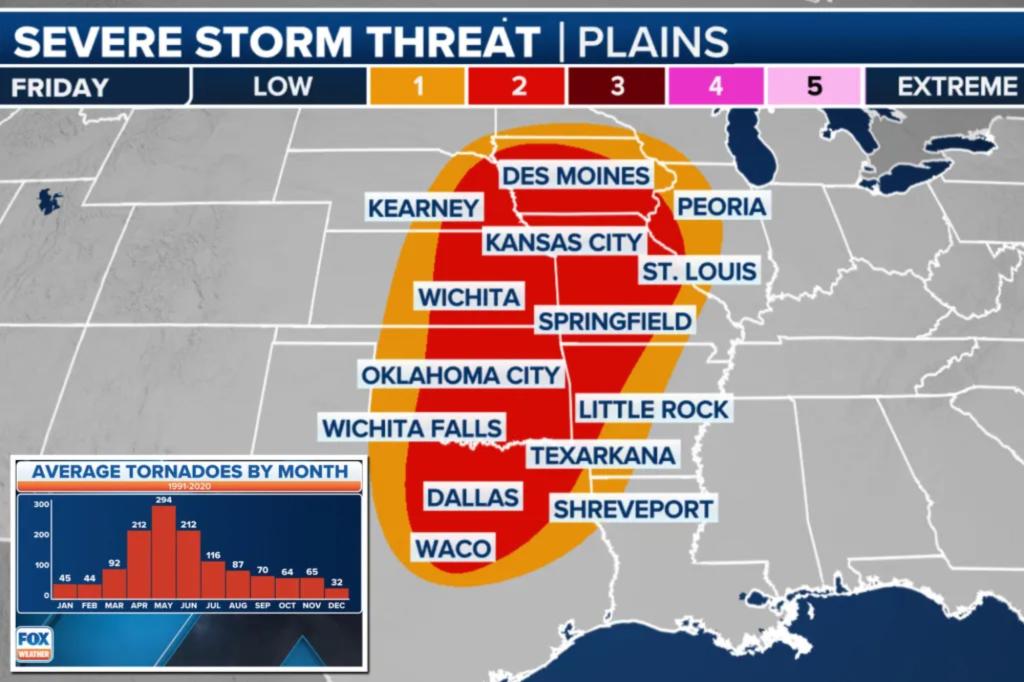The spring severe weather season is in full swing, with the potential for severe thunderstorms across the central U.S. this week and into the weekend. Strong to severe thunderstorms will be possible across several locations on Monday, Tuesday, and Wednesday, with the risk increasing towards the end of the week. The southern and central Plains are expected to be the primary target on Thursday, with a Level 2 out of 5 risk for severe thunderstorms. An upper-level disturbance moving into the Southwest will fuel the development of rain and thunderstorms as it approaches the central U.S.
On Thursday, the severe weather threat extends from south-central Nebraska through central Kansas, western Oklahoma, and northwestern Texas. Cities like Hays, Dodge City, and Wichita in Kansas, as well as Woodward in Oklahoma and Lubbock in Texas, are at risk. The Storm Prediction Center warns that supercell thunderstorms could develop, capable of producing large hail, damaging wind gusts, and even tornadoes. The severe weather threat will shift east to the Missouri Valley and Plains by Friday, covering eight states with a Level 2 out of 5 risk.
On Saturday, the storm threat will target the southern and central Plains, with portions of North Texas, Oklahoma, and southern Kansas facing the highest risk. Daytime heating will allow for storms to develop and continue into the evening. With changes expected in the forecast, it’s essential to stay informed through tools like the FOX Weather app for weather alerts and updates. Tornadic activity in April has been above average, with 184 reports, while May typically sees the most tornadoes with an average of 294 twisters.
In the year 2024, there have been 347 reports of tornadoes so far, more than 10% lower than an average year. The increase in tornadic activity has been particularly noticeable in the Ohio Valley, with Ohio leading the country in the number of tornadoes. Severe weather outbreaks are more common during La Niña events than in El Niño or neutral episodes, and the current status of the Pacific Ocean is considered to be in a neutral phase of the El Niño-Southern Oscillation.
Overall, the spring severe weather season is bringing heightened risks of thunderstorms and tornadoes across the central U.S., with multiple days of severe weather threats expected throughout the week. It is crucial for residents in affected areas to stay informed, prepare for potential severe weather, and heed warnings from meteorological organizations like the Storm Prediction Center. By following safety measures and utilizing weather monitoring tools, individuals can protect themselves and their communities during this active severe weather season.


